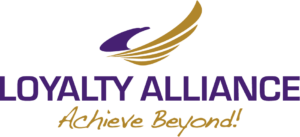In this post, learn how to improve employee productivity dramatically via a Task Management session where all department employees or team members participate in a facilitated, digital group activity called a Conversation Framework.
Business owners understand the need to introduce long-term improvement initiatives into their organizations. The pay-off that some organizations experience is astounding and certainly helps pave their path into the future with more success, flexibility, and stability.
Unfortunately, not every organization has found that same success. While organizations strive to be more efficient and effective through improvement initiatives, the changes can be overwhelming for the small organization that doesn’t have somebody on staff who can fill the crucial role of “Change Champion.” This champion role is divided among several people or just one of many hats a single person wears. The bottom line is that the initiative does not progress as hoped and lacks the momentum needed to change the organization meaningfully. The end result? Some organizations give up somewhere in the middle of the journey with money invested and little to show for the investment. At the same time, the employees have chalked up the improvement initiative as another “program of the month” or are frustrated because something was tried, potentially upsetting their work, and they weren’t included in the change at any point—only recipients of the results from the initiatives started by others.
If this resembles your situation, there is a way to bring long-term improvement initiatives back into your organization. You must focus on the three Ps – the People, the Processes, and your Planning / Preparation routines. In this article, we will focus on People.
Focusing on the People is a great way to show your employees and staff that you care about them. A periodic review of what your employees do in their jobs/roles at the task level (called Task Management) will highlight the following:
- How many “hats” are they wearing, and what kinds of “hats,”
- If the workload is balanced across the staff,
- Which tasks employees are completing without fail,
- Which tasks they are not able to complete,
- Which tasks are not needed anymore and can be dropped, freeing up time, and
- If it makes sense to move any tasks to others in the organization.
The above list is only a few outcomes that can be discovered during a Task Management session whereby all the department employees or team members participate in a facilitated, digital group activity called a Conversation Framework. An important message you will give your staff is, “I care about what you do, how you feel about your job, and how you think things could be improved.” We don’t spend enough time talking to our employees to know the nitty-gritty details of how they really feel about their jobs, what challenges they are facing, and what improvements they see as needed. Task Management is the perfect way to open that dialog and find the pain points.
Over the years, I have had many opportunities to facilitate Task Management conversations in various situations. The results of a few of the sessions may interest you. Emotional situations were diffused by focusing on the people and their issues through Task Management, and employees felt much better about their jobs.
- Merging Two Companies
In this situation, two small companies of about 20 employees merged to form one. Half of each staff was let go in the merger. The people didn’t know each other too well, emotions were high, and communication lines were barely open.
Running a Task Management session with the group allowed the employees to get to know each other and opened the lines of communication as tasks were described. Tasks were moved between people to best suit the employees’ skills and interests. And possibly most importantly, people began to respect the employees who “took their friends’ jobs” as they learned what skills and talents the employees brought to the table.
- New Supervisor Training
When “Nancy” was hired from outside the company to supervise a very fast-paced, dynamic department of seven people, there was an urgency to get her up to speed as quickly as possible. In the Task Management session with the department staff, Nancy understood what each person did in the department in less than four hours. The session also gave her a taste of her staff’s personalities, interests, and issues. Finally, the session gave her a crash course on the terminology used in the department.
- Overworked Employee
“Shelley” was an exceptional worker. So much so that she was one of those people to whom management always gave special projects because they knew she could complete them without fail. One problem was that many of those “special projects” eventually became department programs she had to organize, champion, and maintain herself. She often commented that she felt she did the work of three people alone. And she was correct. After a Task Management session, her immediate manager realized how much Shelley had on her plate and how many programs were not getting the necessary time and attention because Shelley was pulled in too many directions. The result was that the manager could justify an additional two people working with Shelley. Shelley became the lead person and was then able to drive the programs to success with adequate staff attention.
- Hiring Frenzy
I once worked with a company mandated to go from 12 employees to 24 in less than six months. While the company management knew what each person did before the hiring frenzy, they had to carefully map out what tasks would be transferred to the new employees (with adequate training) as departments expanded. With a clear understanding of what everybody did at the task level before the hiring started, coupled with a sense of what tasks would shift around, the company management had a much better handle on the workload redistribution process.
- Legacy Task Issues
“Christine” transferred to a new department, eager to learn her new job. Unfortunately, her replacement in her previous department was not hired when she transferred out. Because some key activities needed to be done before the replacement could be employed, the two managers agreed that Christine would continue to do certain tasks until she could train her replacement.
Fast forward six months. The replacement was in place, but somehow the managers never arranged for Christine to train the replacement on the legacy tasks. Christine, from another department, continued to do work for her old department. Her frustration escalated because she could not give all her time to her new job. But everyone knew that she was sharing time, so why whine about it?
Fast forward another six months, and the story was still the same. Christine is now very frustrated that nobody seems to care that she is doing work for another department, and only Christine seems to care.
During a Task Management session, these legacy tasks came out, and Christine’s manager questioned why she was still doing the work for the other department. The manager fully realized the time Christine spent on the tasks and how that had impacted her productivity for their department. The manager resolved the issue the next day by scheduling a time for Christine to transfer the jobs back to the appropriate department.
————————————————————————————————————————————————————–
Task management sessions are an excellent way for companies to open employee communication lines. One session participant once told me – “We talk every day, but we are so busy with daily work that we never really have time to discuss our real issues. In a Task Management session, we talk and resolve our issues.”
Task Management sessions should be run every six months with the same group of people to ensure that workloads are continuously balanced and aligned with department priorities and shifts in the work. The sessions also ensure employees understand what tasks must be considered a priority to meet the department and organizational goals. An excellent book titled The Paradox Principles sums it up nicely: “Create a great organization one employee at a time.” Task Management drills down to the issues that matter most to employees. After addressing these issues, employees are more willing to support the organization’s long-term improvement initiatives.
In summary, what can an organization expect from using a Task Management Conversation Framework at the departmental level?
Benefits
- Lower costs by balancing workloads, minimizing OT, and eliminating duplicated or unnecessary tasks
- Increase productivity by defining clear roles and responsibilities, realigning tasks to employees with better skills or more interest in the functions, and immediately looking at how changes impact the employees at the task level
- Improve morale by opening communication lines, minimizing stress and frustration for those who handle more tasks than others, and validating employees’ contributions to the organization’s goals
- Develop management by giving them a vehicle for “getting the right people on the bus and in the right seat,” as well as allowing them to dig deep with their staff to learn the issues that mean the most to them
Best Practices
- Conduct a Task Management session in each department every 6 to 9 months (contact me for information on my Task Management Conversation Framework)
- Make sure that the department supervisor or manager participates in the session
- Use a facilitator from outside the department to bring fresh perspectives and unbiased suggestions to the group to keep the supervisor, or manager focused on the session
My next article will focus on the second P – Processes. Processes are the backbone of any organization, creating stability and efficiencies, and process analysis are also key to successful improvement initiatives.
Any questions or comments? Please share them below.
Until next time!
- Nurturing Innovation Through Psychological Safety: A Journey with Conversation Frameworks - July 26, 2024
- Unveiling Diversity in Problem-Solving: A DEI Perspective on Conversation Frameworks - July 11, 2024
- Bridging Gaps and Building Solutions: The Unfolded Story of Innovative Management Tools - June 17, 2024

